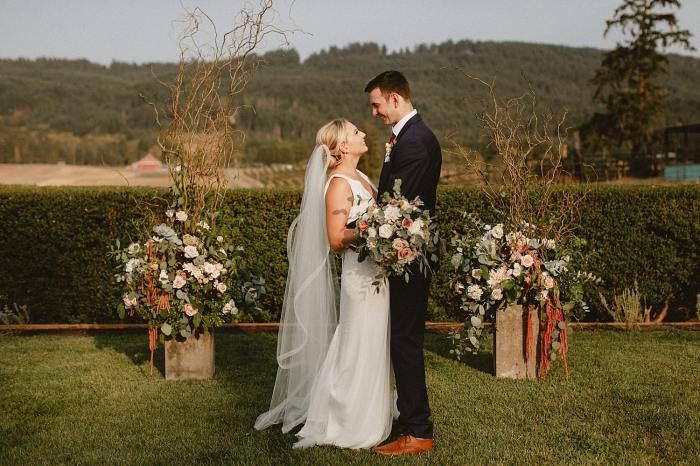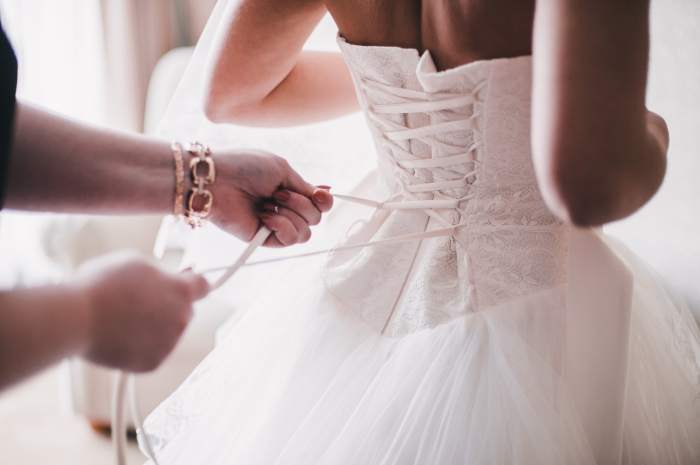Wedding Dress Alterations Portland Oregon
Finding Portland, Oregon Wedding Dress Alteration Specialists
Wedding dress alterations portland oregon – Finding the right alteration specialist for your wedding dress is crucial for ensuring a perfect fit and flawless look on your big day. Portland, Oregon boasts several reputable shops specializing in wedding dress alterations. This section will highlight three such shops, compare their pricing, and share customer reviews to help you make an informed decision.
Reputable Portland Wedding Dress Alteration Shops
Three reputable alteration shops in Portland, Oregon known for their expertise in wedding dress alterations are:
- Shop Name 1: [Insert Shop Name]; Address: [Insert Address]; Phone: [Insert Phone Number]; Website: [Insert Website Link (if available)]
- Shop Name 2: [Insert Shop Name]; Address: [Insert Address]; Phone: [Insert Phone Number]; Website: [Insert Website Link (if available)]
- Shop Name 3: [Insert Shop Name]; Address: [Insert Address]; Phone: [Insert Phone Number]; Website: [Insert Website Link (if available)]
Comparison of Pricing Structures
Pricing for wedding dress alterations varies significantly depending on the type and extent of alterations required. Below is a comparison of the pricing structures of two shops (Shop Name 1 and Shop Name 2), showcasing their fee breakdowns for common alterations.
| Alteration Type | Shop Name 1 (Estimated Price Range) | Shop Name 2 (Estimated Price Range) |
|---|---|---|
| Hemming | $[Insert Price Range] | $[Insert Price Range] |
| Taking in Seams | $[Insert Price Range] | $[Insert Price Range] |
| Adding Straps | $[Insert Price Range] | $[Insert Price Range] |
Customer Reviews of Portland Alteration Specialists

Source: andreazajonc.com
Customer reviews provide valuable insights into the quality of service and expertise offered by different alteration shops. The table below summarizes reviews from various online platforms.
| Shop Name | Review Source | Review Summary |
|---|---|---|
| [Shop Name 1] | [Review Platform, e.g., Yelp] | [Summary of positive/negative reviews] |
| [Shop Name 2] | [Review Platform, e.g., Google Reviews] | [Summary of positive/negative reviews] |
| [Shop Name 3] | [Review Platform, e.g., The Knot] | [Summary of positive/negative reviews] |
Types of Wedding Dress Alterations Offered
A wide range of alterations can be performed on wedding dresses to achieve the perfect fit and style. Understanding these alterations is essential for effective communication with your alteration specialist.
Common Wedding Dress Alterations
Common alterations include:
- Hemming: Adjusting the length of the dress to the desired length.
- Taking in Seams: Reducing the size of the dress to achieve a more fitted silhouette.
- Bustle: Adding a bustle to lift and secure the train of the dress.
- Adding Straps or Sleeves: Customizing the dress by adding straps or sleeves.
- Altering Neckline or Bodice: Modifying the neckline or bodice to improve fit or style.
- Adding or Removing Lace or Other Embellishments: Enhancing or simplifying the dress’s design.
Wedding Dress Alteration Process Flowchart
The typical process involves several steps:
[Insert a textual description of a flowchart. For example: Start -> Initial Consultation & Measurements -> First Fitting -> Adjustments & Second Fitting -> Final Fitting -> Dress Pickup. Each step can be described in more detail.]
Timeframes for Different Alterations
The time required for alterations varies depending on the complexity of the work.
| Alteration Type | Estimated Timeframe |
|---|---|
| Hemming | 1-2 weeks |
| Taking in Seams | 2-4 weeks |
| Adding Straps/Sleeves | 3-6 weeks |
| Bustle | 2-3 weeks |
Factors Affecting Wedding Dress Alteration Costs: Wedding Dress Alterations Portland Oregon
Several factors influence the final cost of wedding dress alterations. Understanding these factors allows for better budget planning.
Factors Impacting Alteration Costs
Key factors include:
- Fabric Type: Delicate or intricate fabrics require more time and expertise, increasing costs.
- Design Complexity: Dresses with elaborate beading, lace, or other embellishments are more expensive to alter.
- Extent of Alterations: Minor adjustments are less expensive than extensive alterations.
Examples of Alteration Costs for Different Dresses
- Simple A-line Dress: Minimal alterations (hemming, slight seam adjustments) might cost $[Insert estimated price range].
- Lace Mermaid Gown: Significant alterations (taking in seams, adding bustles, adjusting neckline) could cost $[Insert estimated price range].
- Beaded Ballgown: Extensive alterations (significant seam adjustments, beadwork repair, bustle) may cost $[Insert estimated price range].
Designer vs. Non-Designer Dress Alterations
Designer dresses may sometimes have higher alteration costs due to the complexity of the design and the use of specialized materials. However, this isn’t always the case; the extent of alterations needed is the primary driver of cost.
Preparing for a Wedding Dress Alteration Appointment
Proper preparation for your alteration appointments ensures a smooth and efficient process.
Preparing for Your First Appointment

Source: co.uk
Before your first appointment, ensure you:
- Bring your wedding dress, undergarments, and shoes you plan to wear on your wedding day.
- Have a clear idea of the alterations you want, including pictures or sketches if helpful.
- Communicate your budget and timeline to the alteration specialist.
Effective Communication with Your Alteration Specialist
Clearly articulate your desired changes and fitting preferences. Be open to the specialist’s suggestions and feedback. Ask questions and express any concerns you may have.
Checklist of Items to Bring to Appointments
- Wedding Dress
- Undergarments (bra, shapewear)
- Shoes
- Veil (if applicable)
- Pictures or sketches of desired alterations
- Payment method
Post-Alteration Care and Maintenance

Source: wedding-spot.com
Proper care after alterations ensures your dress remains in pristine condition for years to come.
Caring for Your Altered Wedding Dress, Wedding dress alterations portland oregon
After alterations, it’s crucial to:
- Have your dress professionally cleaned as soon as possible to remove any dirt or stains.
- Store your dress in a cool, dry, and dark place away from direct sunlight and moisture.
- Use an acid-free tissue paper to stuff the dress to maintain its shape.
- Store the dress in a breathable garment bag to prevent yellowing or damage.
Potential Post-Alteration Issues and Solutions
Potential issues include minor unraveling of seams or slight color changes. Addressing these promptly with your alteration specialist is crucial. Minor issues can often be easily rectified.
Ideal Wedding Dress Storage
Imagine your wedding dress nestled in a breathable, acid-free garment bag, gently stuffed with acid-free tissue paper to maintain its shape. It rests in a cool, dark closet, away from direct sunlight and moisture, in a climate-controlled environment to protect its delicate fabric and embellishments from damage.
General Inquiries
How far in advance should I schedule my alterations?
Ideally, schedule your first fitting at least six to eight weeks before your wedding date to allow ample time for all necessary alterations.
What if I need emergency alterations?
Many alteration shops offer rush services for an additional fee. Contact them directly to discuss your needs and timeline.
What forms of payment do alteration shops typically accept?
Most shops accept cash, credit cards, and sometimes checks. It’s always best to confirm their payment methods beforehand.
Can alterations change the overall style of my dress?
While significant design changes are generally not recommended, skilled seamstresses can often make adjustments that subtly enhance the dress’s style and fit.
What should I do if I’m unhappy with the alterations?
Communicate your concerns directly with the alteration specialist. Most reputable shops will work to address your issues to your satisfaction.



















